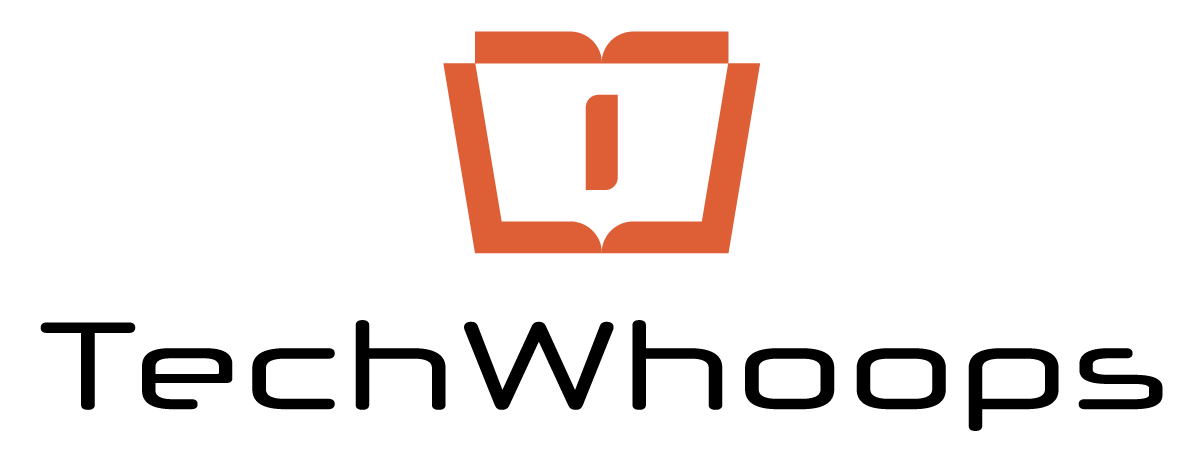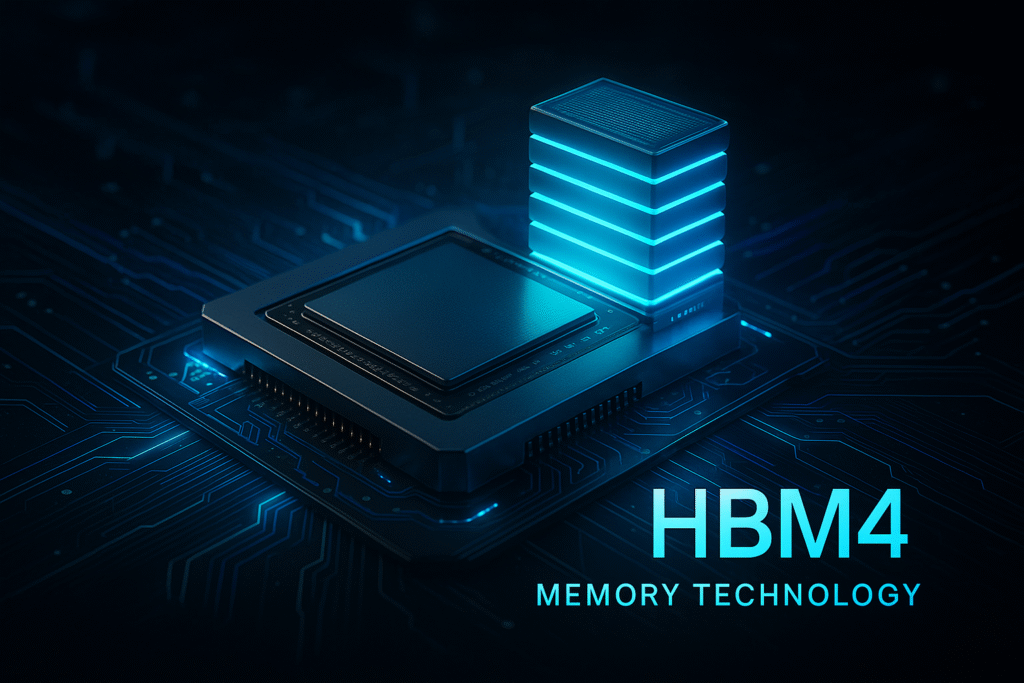Introduction: Why HBM4 Matters Today
In 2025, memory technology is at a turning point. As AI models grow in size and complexity, and workloads push the limits of bandwidth, traditional memory technologies increasingly struggle to keep pace. Enter HBM4 — the next evolution of High Bandwidth Memory (HBM) that promises to push performance, efficiency, and integration to new heights.
HBM4 isn’t just an incremental step forward — it represents a structural shift. With a 2048-bit interface, enhanced power management, reliability features, and support for higher stack heights, HBM4 is designed to be the backbone memory solution for next-gen AI accelerators, data centers, high performance computing (HPC), and advanced GPUs. Already, memory leaders like SK Hynix have announced that they’ve completed development and are preparing for mass production. Meanwhile, Micron reports sample modules with 2.8 TB/s bandwidth and 11 Gbps per-pin speeds, with plans to push the envelope further.
Source: https://finance.yahoo.com/news/micron-says-hbm4-customer-samples-201000306.html
In this deep dive, we’ll explore the architecture behind HBM4, its performance potential, technical challenges, market readiness, real-world use cases, and what lies ahead. Whether you’re a hardware designer, AI enthusiast, or tech-savvy reader, this article gives you a full picture of the HBM4 era.
Table of Contents
Evolution of HBM: From HBM1 to HBM4
To understand HBM4’s significance, it helps to trace the evolution of HBM over past generations.
What is HBM?
High Bandwidth Memory (HBM) is a type of DRAM optimized for high throughput, achieved by stacking multiple memory dies vertically and connecting them through Through-Silicon Vias (TSVs) or other high-density interconnects. HBM stacks are typically integrated using a silicon interposer or in advanced 2.5D/3D packaging. The close proximity to compute cores (e.g. GPU, AI accelerator) allows much wider data buses, higher bandwidth, and lower power per bit compared to conventional DDR or GDDR memory.
Read more about What is HBM?
Key advantages of HBM include:
-
Very wide interfaces (many bits in parallel) rather than very high per-pin speeds
-
Lower power and energy per bit because of shorter distances and more efficient signaling
-
Compact footprint — stacking reduces board area compared to wide discrete memory modules
-
Scalability for high-throughput systems — especially useful in AI, GPUs, and HPC
Over the years, companies like Samsung, SK Hynix, and AMD co-developed and pushed HBM through successive standard versions under JEDEC oversight.
Generations of HBM
Here’s a quick summary of key HBM generations up to HBM4:
| Generation | Year / Release | Max per-pin speed | Typical stack / density | Approx. per-stack bandwidth | Distinguishing features |
|---|---|---|---|---|---|
| HBM1 | ~2013 | ~1 Gb/s | 4 dies × low density | ~128 GB/s | First generation, proof of concept |
| HBM2 | ~2016 | ~2.4 Gb/s | 8 dies × 1 Gb | ~307 GB/s | Widely adopted in GPUs / HPC |
| HBM2E / HBM2E+ | ~2019 | ~3.6 Gb/s | 8–12 dies × 2 Gb | ~461 GB/s | Density and speed improvements |
| HBM3 | ~2022 | ~6.4 Gb/s | 12–16 dies × 2–4 Gb | ~819 GB/s | Significant bandwidth boost, maturity |
| HBM3E | ~2023 | ~9.8 Gb/s | 12–16 dies × 3 Gb | ~1.2 TB/s+ | Interim “enhanced” generation |
| HBM4 | 2025 spec / rollout | up to 8 Gb/s per pin (baseline) | up to 16 dies × ~4 Gb | ~2 TB/s | Doubling interface width, new RAS, power features, etc. |
When JEDEC finalized the HBM4 specification in April 2025, it confirmed features like a 2048-bit interface per stack, support for 4 Gb layers (leading to up to 64 GB per stack), and transfer speeds up to 8 Gb/s per pin. Because the interface width doubles over earlier HBM generations, even without massive per-pin speed increases, total bandwidth per stack can rise dramatically.
HBM4 is designed to be backward-compatible (in controller logic) with HBM3 generations, facilitating adoption.
The Architecture & Innovations in HBM4
HBM4 introduces several structural and design innovations to overcome limitations of prior generations.
Wider 2048-bit Interface
One of the most significant changes is the shift to a 2048-bit wide I/O per stack (double the width of prior HBM generations). This allows data to flow in broader parallel paths rather than relying only on boosting per-pin speeds.
This architectural change brings advantages:
-
More parallelism, which helps with latency and throughput
-
Lower need to push extremely high speeds on individual pins (easing signal integrity challenges)
-
Compatibility with higher stack heights without overburdening per-pin signaling
Improved RAS / Reliability & Power Management
Earlier HBM generations already had reliability, availability, serviceability (RAS) features, but HBM4 builds on them. New power states, improved error correction, thermal monitoring, and dynamic voltage/frequency scaling are expected.
One major enhancement is better power gating for idle portions of the stack, reducing leakage, and more granular control to mitigate heating across layers.
Stacking, Base Die, and Logic Integration
HBM4 can support up to 16 memory layers (dies) in a stack. Each die may be ~4 Gb in density, enabling up to 64 GB in a single stack.
Importantly, HBM4 continues using a base logic die underneath memory dies. The base die houses interface buffers, I/O logic, test circuits, and sometimes cooling or repair logic. However, designs now lean toward customer-specific logic (i.e. logic customizing per customer needs). This makes the memory stack not just a “dumb memory” but a semi-customized component — increasing complexity but also offering more optimization opportunities.
Signal Integrity, Thermal, and Power Delivery
As stacks grow in height and bandwidth increases, challenges in signal integrity, crosstalk, and power delivery intensify. HBM4 uses advanced interconnect techniques, possibly hybrid bonding, improved TSVs or micro-bump technologies, and refined clock-tree and routing strategies to maintain reliability.
Because each stack sits close to a GPU or accelerator, thermal dissipation is critical. Designers must ensure heat can flow out without hotspots or thermal throttling. The base die often interposes cooling paths or thermal vias to assist in heat conduction.
PHY, Controller & IP Blocks
To fully realize HBM4, DRAM vendors and IP providers (like Rambus, Cadence, etc.) produce PHY and controller IP that supports the new features, multi-channel parallelism, dynamic timing, calibration, voltage scaling, and lane repair. For example, Rambus has published a whitepaper on HBM4 memory controllers supporting over 2.5 TB/s for training systems.
Cadence also offers HBM4E (an enhanced variant) PHY / controller IP aimed at ultra-high performance systems up to 12.8 Gb/s per pin with a 2048-bit interface.
Such IP blocks are foundational to integrating HBM4 into real systems while maintaining performance margins and signal correctness.
Performance Potential & Benchmark Highlights
Theoretical Bandwidth Ceiling
With a 2048-bit interface and 8 Gb/s per pin, the theoretical per-stack bandwidth reaches approximately 2 TB/s (i.e. 2,048 bits × 8 Gb/s ÷ 8 bits per byte). This is a substantial jump from prior HBM3 / HBM3E.
Given multiple stacks (commonly 4–6 stacks in a GPU or accelerator design), the aggregate bandwidth can approach 8–12 TB/s or more, depending on stacking choices and design topology.
Real-World Sample Data
Micron has already shipped customer samples of HBM4 modules achieving 2.8 TB/s with per-pin speeds exceeding 11 Gb/s — exceeding the standard baseline.
This demonstrates headroom above the spec, suggesting that real systems may push boundaries even further through custom optimizations.
Comparison vs HBM3 / HBM3E
Let’s compare performance leap:
-
HBM3 / HBM3E stacked memory (depending on width and speed) can deliver ~1 TB/s or slightly more per stack (depending on configuration).
-
HBM4 can nearly double those numbers just through interface width improvements, before pushing per-pin speeds higher.
-
Because HBM4 allows durability and signal integrity design margins, practical systems may see 1.5x to 2x real-world gains per stack over HBM3 designs.
However, raw bandwidth is only part of the story — real gains come if system design, memory scheduling, caching, and interconnects can keep up.
Technical Challenges & Design Tradeoffs
No jump in technology is without tradeoffs. Let’s cover the main challenges HBM4 designers must navigate.
Manufacturing Yield & Complexity
With higher stack heights, more dies, complex base logic, and integrated customization, yield loss risk rises sharply. A defect in any layer or interconnect can impact the stack, so testing, redundancy, and repair schemes must be robust.
Repairability (e.g. remapping defective lanes) must become more advanced. The economic cost of a failed stack is high, especially when memory production volumes scale.
Signal Integrity & Timing
Doubling the interface width increases routing complexity. Ensuring precise timing and alignment across many lanes is nontrivial. Designers must mitigate skew, jitter, crosstalk, and power supply noise to maintain stable high-speed operation.
As per-pin speeds increase (e.g. beyond 8 Gb/s), these issues become even more severe. That’s why many designers prefer to balance width with moderate per-pin speeds instead of pushing one dimension extreme.
Power & Thermal Constraints
Operating at massive bandwidth, the stacks generate heat (especially in inner dies). Effective heat dissipation, careful power delivery (to avoid IR drop), and thermal management are crucial. Designers must also manage leakage, voltage droop, and transitions between idle and active states.
Maximizing energy efficiency is key — memory cannot become the thermal or power bottleneck of the entire system.
Cost and Supply Chain Risk
HBM4 stacks are expensive. As a relatively new technology, component yields, packaging, and assembly costs are high. The market must absorb these costs, which may confine early adoption to high-end AI or server systems.
Further, the supply chain is concentrated among a few memory manufacturers (Samsung, SK Hynix, Micron). Any disruption can ripple strongly in AI and GPU markets.
Integration & Ecosystem Support
To benefit from HBM4, GPUs, AI accelerators, memory controllers, board designs, interposers, cooling, and system-level architecture must all align. Controllers must manage new power states, RAS, lane calibration, and timing. Putting in new memory without system-level adaptation would waste potential gains.
In other words, real-world gains require co-design across multiple layers — not just memory alone.
Market Readiness & Roadmaps
As of late 2025, several key industry developments show HBM4 is moving from concept to reality.
SK Hynix: First to Complete HBM4 Development
In September 2025, SK Hynix announced it had completed development of HBM4 and is preparing for mass production.
They claim this will be a “symbolic turning point beyond AI infrastructure limitations” and aim to become a full-stack AI memory provider.
These HBM4 chips are undergoing final validation by partners like Nvidia before full deployment.
Micron’s Sample Releases
Micron has started shipping HBM4 samples (e.g. 12-high stacks) achieving 2.8 TB/s bandwidth with 11 Gb/s per-pin rates.
Micron is also eyeing HBM4E variants, which include more flexible base die customization, higher per-pin speeds, and extra performance headroom.
Samsung & Others
Samsung has been developing HBM4, with indications they intend to ramp production in or after 2025.
Roadmap analyses suggest memory manufacturers, including SK Hynix, Samsung, and Micron, are preparing not just HBM4 but also future HBM4E and beyond (HBM5, HBM6).
Some reports from TrendForce estimate HBM4 supply ramping from late 2025 through 2026, particularly targeting AI / data center segments.
One wildcard: Samsung is reportedly exploring high bandwidth flash (HBF) — a variant combining DRAM-like bandwidth with NAND flash technology — which may compete or complement HBM4 in certain segments.
Use Cases & Impact: Who Stands to Benefit?
HBM4 isn’t just a technical novelty — its real value lies in enabling new system-level performance capabilities. Let’s explore where HBM4 could make the biggest difference.
AI Training & Inference Accelerators
Why memory bandwidth matters:
Modern AI training and inference workloads often become memory-bound. Compute units (e.g. tensor cores) wait for data if memory cannot keep up. HBM4’s elevated bandwidth reduces bottlenecks, enabling higher throughput and lower latency.
Many AI accelerators (e.g. those from NVIDIA, AMD, or startups) integrate HBM stacks close to compute cores. HBM4 allows them to scale model sizes, batch sizes, or parallelism without being throttled by memory.
For example, NVIDIA’s upcoming Rubin architecture (to launch in 2026) is expected to adopt HBM4.
High-Performance Computing (HPC)
Supercomputers and scientific workloads (e.g. molecular simulation, climate modeling, computational physics) often demand large memory throughput. HBM4’s stacked architecture helps meet these demands with lower latency and improved energy efficiency per operation.
Graphics, Rendering, and Real-Time Workflows
While traditional gaming GPUs often have used GDDR, the boundary between rendering and compute is blurring (e.g. real-time ray tracing, AI-assisted rendering). High-end GPUs in creative or data workloads may adopt HBM4 to accelerate large texture, compute, and memory-heavy operations.
Edge AI, Embedded Systems & Domain-Specific Accelerators
For domain-specific hardware (e.g. inference accelerators in data centers or edge compute modules), HBM4 allows designers to pack high memory bandwidth in a compact, power-efficient form factor. This can enable more capable AI locally (e.g. inference, real-time analytics) without relying entirely on cloud offloading.
Memory as a Differentiator
Custom memory stacks (with customer-specific logic dies) allow hardware vendors to differentiate in latency, prefetching, interface logic, repair techniques, and more. Memory is no longer a commodity — it becomes part of the differentiated architecture.
What HBM4 Means for System Designers & End Users
Design Considerations for Architects
System architects must think holistically:
-
Memory scheduling & controllers: Need to handle power states, lane calibration, error correction, traffic balancing.
-
Cooling & thermal design: High bandwidth means high power density — cooling must be integrated into chiplet / package architecture.
-
Interposers / substrate routing: Signal paths must maintain integrity across wide interfaces.
-
Supply chain risk: Memory supply, yield, and cost constraints must be accounted for.
-
Fallback / hybrid strategies: Some systems may combine HBM4 with other memory (e.g. DDR, GDDR, or non-volatile memory) in hierarchical memory architectures.
For Users & Enthusiasts: When to Pay Attention
While HBM4 is currently targeted at high-end AI / HPC systems, its ripple effects may reach more familiar devices over time:
-
If you work in AI / machine learning, rendering, GPU computing, or high-performance simulation — HBM4 may become a differentiator in your next-generation hardware.
-
Watch GPU or accelerator announcements for “HBM4” branding or memory specs.
-
Future consumer GPUs (or workstation hardware) may gradually adopt HBM4 if costs decline.
-
Even if HBM4 doesn’t directly appear in your device, its influence will shape memory bandwidth expectations and system balance.
Risks, Limitations & Realistic Adoption Timeline
-
Cost & scarcity: Early adopters face premium pricing and limited supply.
-
Thermal and integration challenges may delay mass deployment in some segments.
-
Software / driver support must evolve to exploit new bandwidth tiers.
-
Adoption timeline is likely 2025–2027 for large AI / HPC systems, with trickle-down to adjacent markets later.
The Road Ahead: HBM4E, HBM5 & Beyond
Looking at the horizon, HBM4 is not the final stop.
8.1 HBM4E (Enhanced)
HBM4E is already being positioned as an extension of HBM4 — offering higher per-pin speeds (e.g. 12.8 Gb/s), flexible base logic customization, and improvements in power/latency tradeoffs.
Memory IP vendors like Cadence and others are already offering HBM4E PHY/controller IP, targeting next-level systems.
8.2 HBM5 and Beyond (HBM6, HBM7, HBM8)
Research and roadmap reports (e.g. from KAIST, WCCFtech, The Filibuster, etc.) foresee HBM standards evolving toward even more aggressive goals — bandwidths up to 64 TB/s (across multi-stack systems), stack heights beyond 24 layers, embedded cooling, and hybrid memory/logic integration.
One speculative future direction is blending HBM with processing-in-memory (PIM) or near-memory compute, reducing data transfer overhead between logic and memory. Recent research like DL-PIM shows promise for dynamic data locality optimizations in 3D memory stacks.
Another emerging interface is UCIe (Universal Chiplet Interconnect Express), which could enable new memory-on-package paradigms combining HBM, LPDDR, or other memory types in more modular systems.
Finally, parallel technologies like high bandwidth flash (HBF) may offer hybrid cost/performance tradeoffs in memory-rich systems. Samsung’s interest in HBF indicates potential competition or complement to HBM in certain workloads.
Summary & Key Takeaways
-
HBM4 is a major leap, bringing a 2048-bit interface, updated RAS features, improved power management, and stack densities up to 16 dies (64 GB) per stack.
-
It allows system architects to double (or more) memory throughput per stack compared to HBM3 / HBM3E, especially when combined with multiple stacks.
-
But with this leap come challenges: yield, signal integrity, thermal management, power delivery, and integration complexity.
-
As of 2025, SK Hynix claims to have completed development and is gearing up for mass production. Micron has shipped high-performance samples arriving at 2.8 TB/s and beyond.
-
Early adopters will likely be AI accelerators, HPC systems, and high-end GPUs (e.g. NVIDIA’s Rubin architecture is expected to adopt HBM4).
-
The future roadmap includes HBM4E, HBM5+, PIM integration, UCIe-based memory packaging, and emerging hybrid memory technologies.
HBM4 is not just another memory spec — it is a structural shift, offering designers a new foundation to scale throughput, improve efficiency, and rethink memory-centric architectures.
If you’re building next-gen compute systems or creating workloads that demand bandwidth, it’s time to pay attention. The HBM4 era is arriving — and the systems that harness it effectively will have a performance edge.


